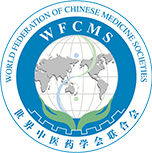Metabolic characterization of the Badagan constitution in mongolian medicine by ultrahigh-performance liquid chromatography/quadrupole time-of-flight mass spectrometry/MS
Release time: Sept 19,2022
Reading volume: 858
Abstract:
This study aimed to identify the potential metabolic biomarkers of the Badagan constitution (BC) in Mongolian medicine. Serum samples from the participants with BCs (n = 32) and aggregative constitutions (n = 30) were analyzed by using ultrahigh-performance liquid chromatography/mass spectrometry. Meanwhile, principal component analysis and orthogonal partial least squares discriminant analysis were used to characterize the endogenous metabolites and potential biomarkers, respectively. Fifteen of the 18 biomarkers in six metabolic pathways were significantly upregulated, including phosphatidylserine, sphingolipids, tryptophan, riboflavin and glutathione, and three biomarkers were significantly downregulated, including lysophosphatidylcholine (LysoPC) (18:1), LysoPC (16:1), and lysophosphatidylethanolamine (LysoPE) (22:2). This study also implied that sphingolipid metabolism, glycerophospholipid metabolism, and tryptophan metabolism played important roles in the BC. Therefore, metabolomics may improve the diagnostic efficacy of the BC in terms of the accuracy and comprehensiveness of a diagnosis based on this constitution. This result further reveals the mechanism of the constitution type in Mongolian medicine and provides a reference for the treatment of related diseases.
This study aimed to identify the potential metabolic biomarkers of the Badagan constitution (BC) in Mongolian medicine. Serum samples from the participants with BCs (n = 32) and aggregative constitutions (n = 30) were analyzed by using ultrahigh-performance liquid chromatography/mass spectrometry. Meanwhile, principal component analysis and orthogonal partial least squares discriminant analysis were used to characterize the endogenous metabolites and potential biomarkers, respectively. Fifteen of the 18 biomarkers in six metabolic pathways were significantly upregulated, including phosphatidylserine, sphingolipids, tryptophan, riboflavin and glutathione, and three biomarkers were significantly downregulated, including lysophosphatidylcholine (LysoPC) (18:1), LysoPC (16:1), and lysophosphatidylethanolamine (LysoPE) (22:2). This study also implied that sphingolipid metabolism, glycerophospholipid metabolism, and tryptophan metabolism played important roles in the BC. Therefore, metabolomics may improve the diagnostic efficacy of the BC in terms of the accuracy and comprehensiveness of a diagnosis based on this constitution. This result further reveals the mechanism of the constitution type in Mongolian medicine and provides a reference for the treatment of related diseases.
Keywords: Mongolian Medicine, Badagan Constitution, Metabolic Characterization, UPLC-ESI-QTOF-MS
[ FULL TEXT ]

